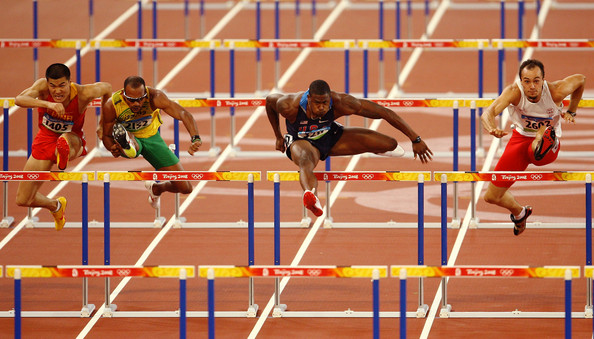UNDERSTANDING THE EFFECTS OF COVID-19 QUARANTINE ON THE FITNESS OF SPORTS PERSONS IN BENGALURU
2020, April, Volume 10-Number 2 July 2, 2020| Author name : | Rini Mary William & Robert Sabestain | ||||
|---|---|---|---|---|---|
| Page no : | 38-56 | Volume : | 10 | Issue : | 2 |
doi no.: 05-2016-44975451, DOI Link :: http://doi-ds.org/doilink/07.2020-77336632/
Rini Mary William1 & Robert Sabestain2
Affiliations:
1Lecturer, Jyoti Nivas College, Bengaluru, rini13j@gmail.com Mobile-9742714019
2Staff, Christ (Deemed University), Bengaluru, robert.sabestain@christuniversity.in Mobile-7204203339
ABSTRACT
The concerns over Corona virus have caused the entire world to adopt a strategy of social distancing and home confinement. With the world going into a shell, this has caused aturbulence in the general economy, along with disorder in the daily lives of the masses. This pandemic has left the sporting world also feel the brunt even more as their life depends on physical activities, outdoor as well as indoor. This pandemic has resulted in a shutdown of gyms, parks, practice arenas and sports fields. Subsequently, major sporting events have been postponed indefinitely. As a result, athletes around the world are feeling the pressure. Psychologists have started the process of studying the impact of this prolonged isolation on the general mental well being of athletes alongside people from other walks of life. With the virulent spread of this virus and the possibility of an extended isolation, it is important to validate the impact of such an isolation on sports persons and study their physical and mental fitness.
This paper proposes to study the coping strategies of athletes in Urban Bengaluru during this lockdown. The time frame chosen for the study is after the Government of India announcing a 21-day lockdown on the 21st March, 2020. The paper further tries to identify the ways in which they continue to work on their physical fitness during this 21-day period of isolation. Further the study proposes to explore the impact of the isolation on their physical and mental wellbeing. The final section highlights certain aspects such as virtual coaching and applications that help athletes to stay fit.
Keywords: Sports, Sportsperson, Quarantine, COVID-19, Fitness, Isolation.
DOWNLOAD FULL TEXT: 
BIBLIOGRAPHY
-
Adams, E. R., Santo, R. J., & Bukowski, M. W. (2011). The Presence of a Best Friend Buffers the Effects of Negative Experiences. Psychology Faculty Publications, 37.
Alexandratos, K., Barnett, F., & Thomas, Y. (2012). The impact of exercise on the mental health and quality of life of people with severe mental illness: a critical review. British Journal of Occupational Therapy, 75 (2). pp. 48-60.
Bhambri, E., Dhillon, P., & Sahni, S. (2005). Effect of Psychological Interventions in Enhancing Mental Toughness Dimensions of Sports Persons. Journal of the Indian Academy of Applied Psychology, Vol. 31, No.1-2, 65-70.
Buenoa, C. A., Hillman, C. H., Redondoa, C. I., Lopez, M., Carrascosaa, D. P., & Vizcaino, V. M. (2019). Aerobic fitness and academic achievement: A systematic review and meta-analysis . Journal of Sports Science, 582–589 .
Kanamori, S. T. (2015). Group exercise for adults and elderly-Determinants of participation in group exercise and its associations with health outcome. The Journal of Physical Fitmess and Sports Medicine, 315-320.
Kelly, M. D., & Walsh, C. B. (2015). The impact of cognitive training and mental stimulation on cognitive and everyday functioning of healthy older adults: a systematic review and meta-analysis. Elsevier, 28-43.
Lee, B., & Browne, L. (2009). African American Student Athletes and Sports Media Consumption. Journal of Black Studies, 238-251.
Martland, R., Mondelli, V., Gaughran, F., & Stubbs, B. (2020). Can high-intensity interval training improve physical and mental health outcomes?A meta-review of 33 systematic reviews across the lifespan. Journal of Sports Sciences, Vol. 38, No. 4, 430–469 .
Milanovic, Z., Sporis, G., & Weston, M. (2015). Effectiveness of High-Intensity Interval Training (HIT) and Continuous Endurance Training for VO2max Improvements: A Systematic Review and Meta-Analysis of Controlled Trials. Research Gate, 1469–1481.
Mnganga, T. (2020). Eyewitness news. Retrieved from Eyewitness news: https://ewn.co.za/2020/03/23/psychologists-explain-how-self-isolation-and-quarantine-will-impact-athletes
Nathawad, R., M, P., Roblin, P. M., Pruitt, D., & Arquill, B. ( 2013). Addressing the Gaps in Preparation for Quarantine. Prehospital and Disaster Medicine, 28(2):132-138.
Seppo, E., Iso, A., & Clair, B. S. (2000). Toward a Theory of Exercise Motivation. Routledge , 52:2, 131-147.
Stanton, R., Happell, B., & Reaburn, P. (2014). The mental health benefits of regular physical activity, and its role in preventing future depressive illness. Dove Press Journal, 45–53.
Tsuji, T., Kanamori, S., Saito, M., Watanabe, R., Miyaguni, Y., & Kondo, K. (2019). Specific types of sports and exercise group participation and socio-psychological health in older people. Journal of Sports Sciences, 38:4, 422-429.
World Health Organization. (2020). Coronavirus disease 2019 (COVID-19) Situation Report- 71. World Health Organization.
World Health Organization. (2020). Coronavirus disease 2019 (COVID-19) Situation Report- 91. World Health Organization.







